How to Crush It at 50+, From the Fittest Guys Who Are Doing It
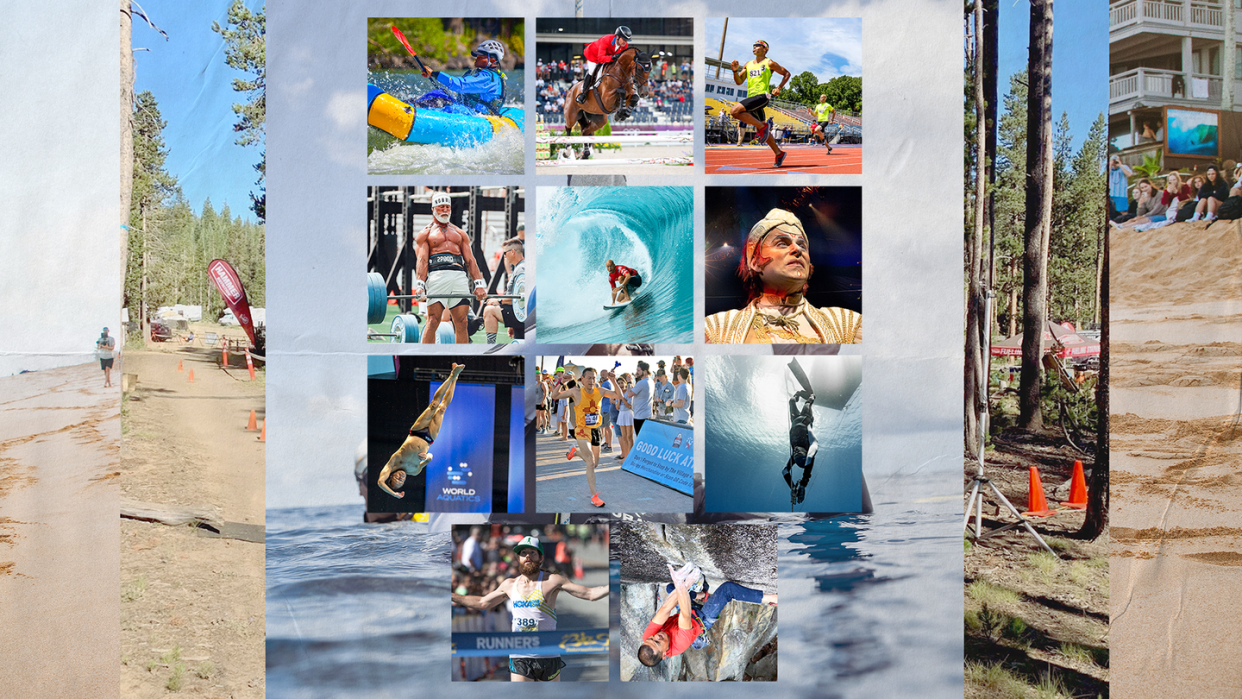
This story is part of This Is 50+—an in-depth look at guys who are thriving later in life, with tips and tricks on how all of us can future-proof our bodies.
[table-of-contents] stripped
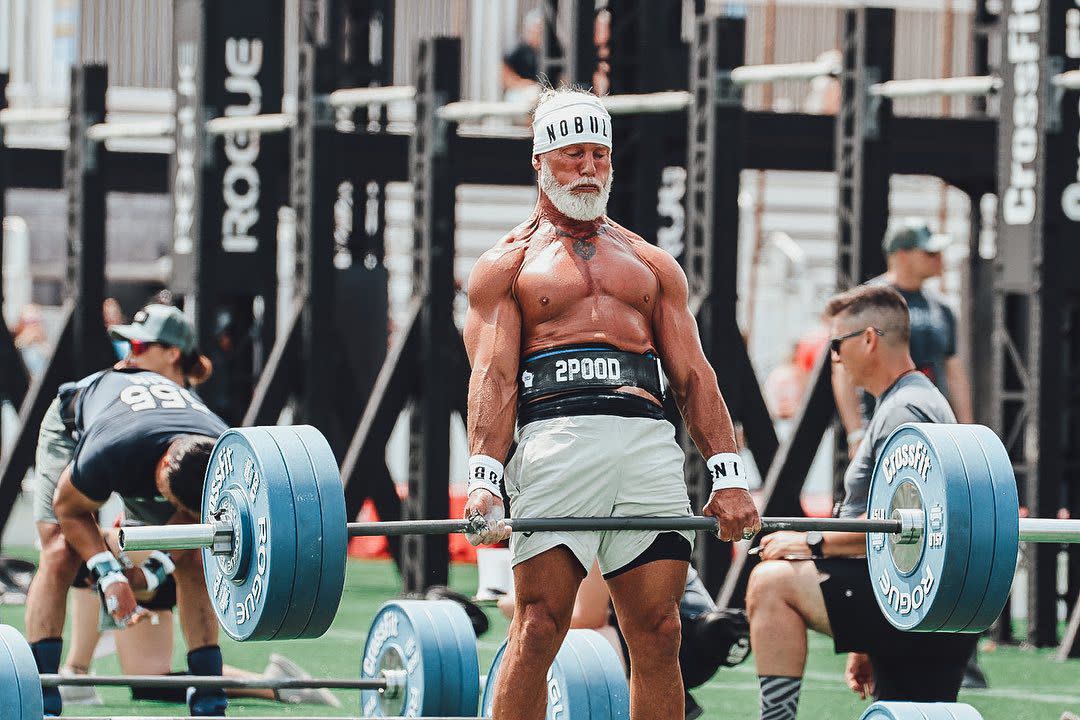
Train Your Mobility
Kevin Koester, 57, CrossFit world champion
Kevin Koester was always an athlete, and his super-physical job as an Ironworker kept him in peak shape. In his late 40s, he transitioned to an office job; at 49 he found CrossFit and the rest is history. In his first CrossFit Open that year, he placed in the top 50 in his age group. The next year, he won his age group. He’s competed in the CrossFit games every other year since then, recapturing his title every time. In 2023, he earned first place in the worldwide rankings in the age 55-59 bracket. His strategies:
OF COURSE THERE'S lots of gym work in Kevin Koester’s life—he regularly trains about two hours a day and does two-a-days when gearing up for a competition. But success isn’t all about getting stronger. “The key to keeping competing is staying healthy, and the most important thing for me in staying healthy is mobility. I do it every day.” Mobility has also contributed to his success moves like Olympic lifts, he says, which he’s continuing to improve. He follows a program called Pliability, which involves long holds. “I mix in active mobility work based on what my body needs on a particular day,” he says.
In addition, “I really try to incorporate sports outside the gym to stay athletic and work ability,” he says. He swims, does yoga, and aims to take his workouts outdoors whenever possible via snowboarding, mountain biking, and trail running. “I believe continually challenging the mind and body to think and move in a different way, and taking a break from one discipline promotes growth,” he says. And to support them: “the basics of sleep and nutrition have become a must instead of just when I feel like it,” he adds. “Being in peak shape is a lifestyle and you must live it every day. That doesn’t mean you can’t have a cheat day, just that it can’t be more than a cheat day.”
Consistency is essential, he says, but he’s personally backed off blind adherence to programming. “When I first started following programming, I did everything that was programmed, every day. Over time, I’ve realized that programming is very important to make sure you get the variety needed. But what is more important is putting in the work with intention,” he says. “When you can’t follow the programing for whatever reason, such as travel, there is always something to do. If I’m on a work trip and driving to Montana, I will get out of my truck and run 100m sprints on a frontage road and do burpees at the end of every run, I’ll find a tree and do pull ups, swim in a river, do cleans with a bolder. I’m a sweaty mess after an hour and in my mind, I’m doing something harder than anyone in the gym that day.”
What he thinks has allowed him to perform at such a high level past age 50: “Attitude! People feel old, so they act old,” he says. “There are plenty of days I feel old, I just don’t act like it, I push myself, and I feel better and younger.”
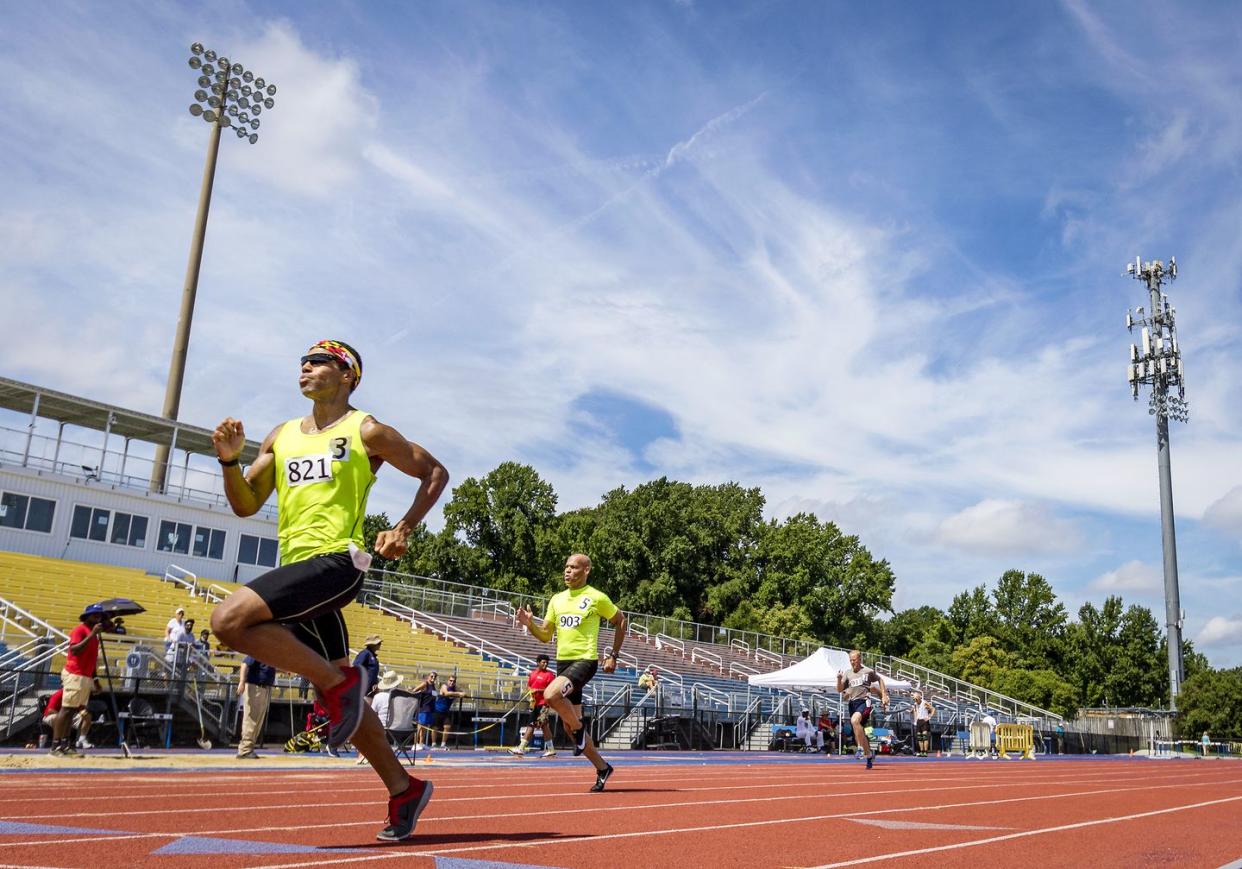
Pay Attention to What Your Body Can Do
Norris Hanes, 56, record-setting sprinter
Norris Hanes is fast. He always was as a kid, but he didn’t competitively run as an adult until 2019, when he not only competed in the 50m event, but set a new meet record with a time of 6.45. He took home other hardware that year as well (first in 100m with a time of 11.82; second in the 200 at 24.15). In 2023, competing in the 55-59 age group, he was even faster, finishing first in the 50m in 6.37. What he does to keep improving:
NORRIS HANES MIGHT not have done the Senior Games in 2019 if his mom hadn’t been so excited about their doing it together. She’d been competing in the games already (that year it was javelin, women 70-74 age group). “If you can imagine, she was saying, ‘ok, son, when you’re 50 and you get old enough, you’ll be able to compete, too,” he says.
When he started training, “that was painful. Everything was tough. It was also the most rewarding,” he says. Unlike just getting out and running as a child, this time, “I had to really be a student again and pay attention to what my body could do and what it was telling me,” he says.
“One of the things that has helped me out is I like to do a lot of research myself,” he says, asking himself what he can do to help take off that next split second. He knew his starts were strong: “I can reach top speed faster than anybody,” he says. He trains with a lot of plyos like bounding drills to keep that edge. But to help get the rest of his race in shape, he worked with a coach to figure out how not to decelerate once he got up and how to iron out any other technicalities that could make for a faster race.
“It was grueling getting myself back into running shape—I think I spent more time icing things down than I did working out,” he says. But equally grueling was not giving in to the temptation to do too much. “There are so many time when you want to do more, but you have to keep that balance so your body can repair itself from the trauma that you just put it through. Until the end of last year, when he had prostate cancer surgery, he worked out on the track about three days a week; the other days “is going out and doing things to limber up and get the blood flowing, like going to the gym and lifting or doing some jogging with some circuit work. I might jog for 100 yards and do a plank, then jog and do a drill,” he says. “It’s enough to get my body sweating and I notice after I’ve done something like that, I feel better than I did going into it.”
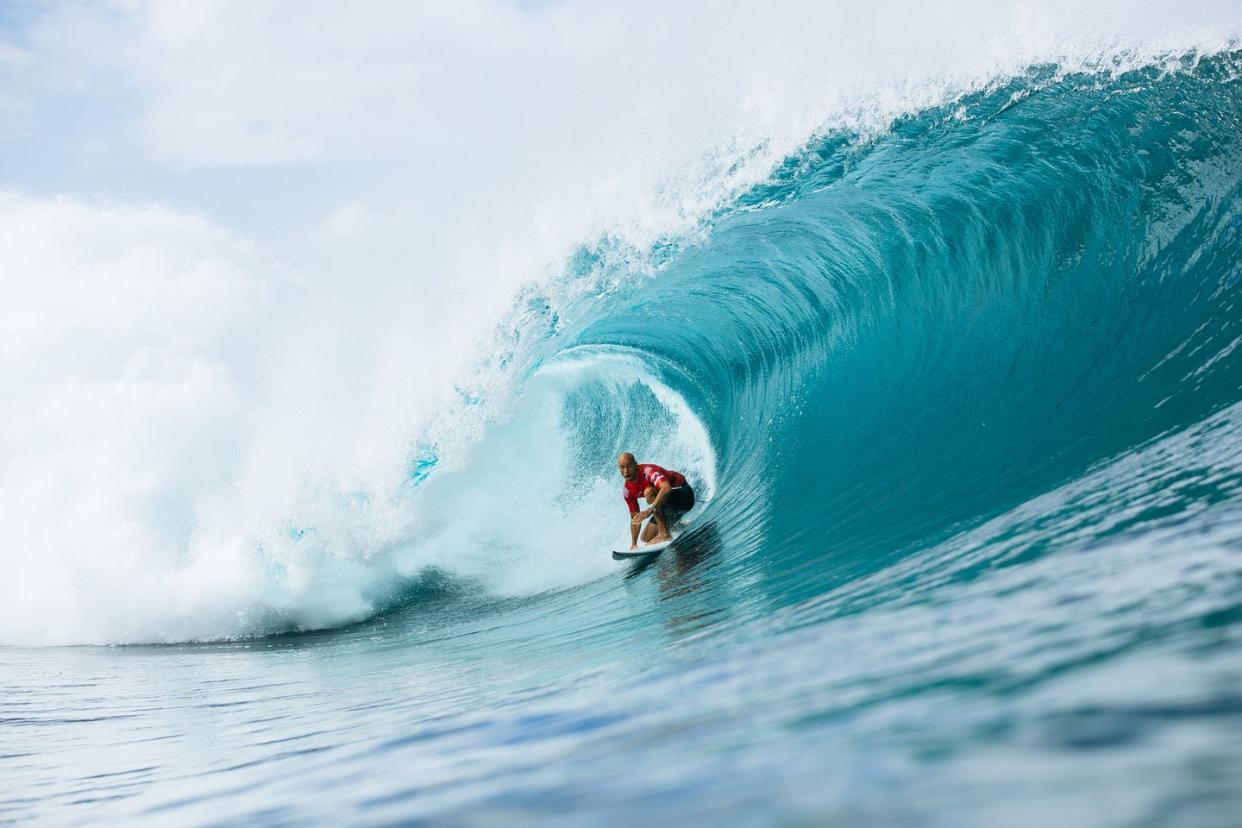
Stay On Top of It
Kelly Slater, pro surfer considered one of the best of all time; record-breaking 11-time World Surf League champion.
At age 52, surf great Kelly Slater continues to compete on the World Surf League (WSL) Championship Tour (CT), the highest level of competition in surfing—and that’s after a pro career that started in 1990 and has earned him nearly every major record in the sport. How he keeps on being great:
WHEN ASKED HOW he stays at the top of the game in his 50s, he jokes, “to be honest, I haven’t really been performing at the highest level.” Yet nobody else at that age—and often even at other ages—is coming close. “Seriously though, just desire. I love surfing more than anything...the competition keeps me wanting to stay in good shape and keep on top of my equipment, and my diet and my discipline around that stuff. I've had goals that have lasted for decades and to try and achieve them, it's taken a daily focus for a lot of years. But loving it helps more than anything.”
Slater isn’t really a gym guy—“surfing is my training,” he says—and if the waves are good, he might spend 6 or 8 hours on them. “A couple of weeks ago, I was surfing 4 times a day for almost a week at over an hour a session.” And that’s after hip surgery in 2023 that kept him landlocked for a while. “I do my best to eliminate injuries and keep my body mobile,” he says.
The biggest then/now difference, he says, is that in the past, he used to do yoga, run hills, do pool work and do other forms of training and surf, surf, surf in between. “But it’s different at my age. I’m not as gung-ho about trying to capture everything. In my 20s and 30s, between contests, I wanted to be on every swell around the world, and on top of my game competitively as well. That takes a lot of brain power and energy. These days, I'm not doing that so much and am a lot more relaxed with it,” he says.
In fact, that calm and cool part of the mental game, always a superpower in surfing, has become even richer.” I think I'm better at accepting loss and being more patient—patient in all parts of life—waiting for a wave on a normal day, patient with people, and better at not judging things as quickly as I did when I was younger. And knowing things aren’t always as you see them right then,” he says.
Diet is the place he’s made changes, saying that he gained more weight than he ever has at 50 and took it off by cutting back on sugar and carbs and “generally keeping the diet a little more simple. I just don’t splurge on excess at this point.”
But that’s not keeping him from big goals. “I think too many people forget about themselves and they have kids and they get old quick. I've found that a lot with what I do and at my age. I hear people say, 'man, I'm only 36 and I'm super out of shape,'” he says. “Make yourself a goal, whether that's a weight, or a cardio goal, or a trip you want to take with friends to do something physical. Go and enjoy something and be ready physically to do it.” Slater has been dropping hints for a few years about retiring from the sport, but he sounds like he’s not done yet when he tells us, “I still look forward to getting better at things in surfing. I still look forward to catching the best wave of my life. You have to have those goals ahead of you to keep it fresh.”
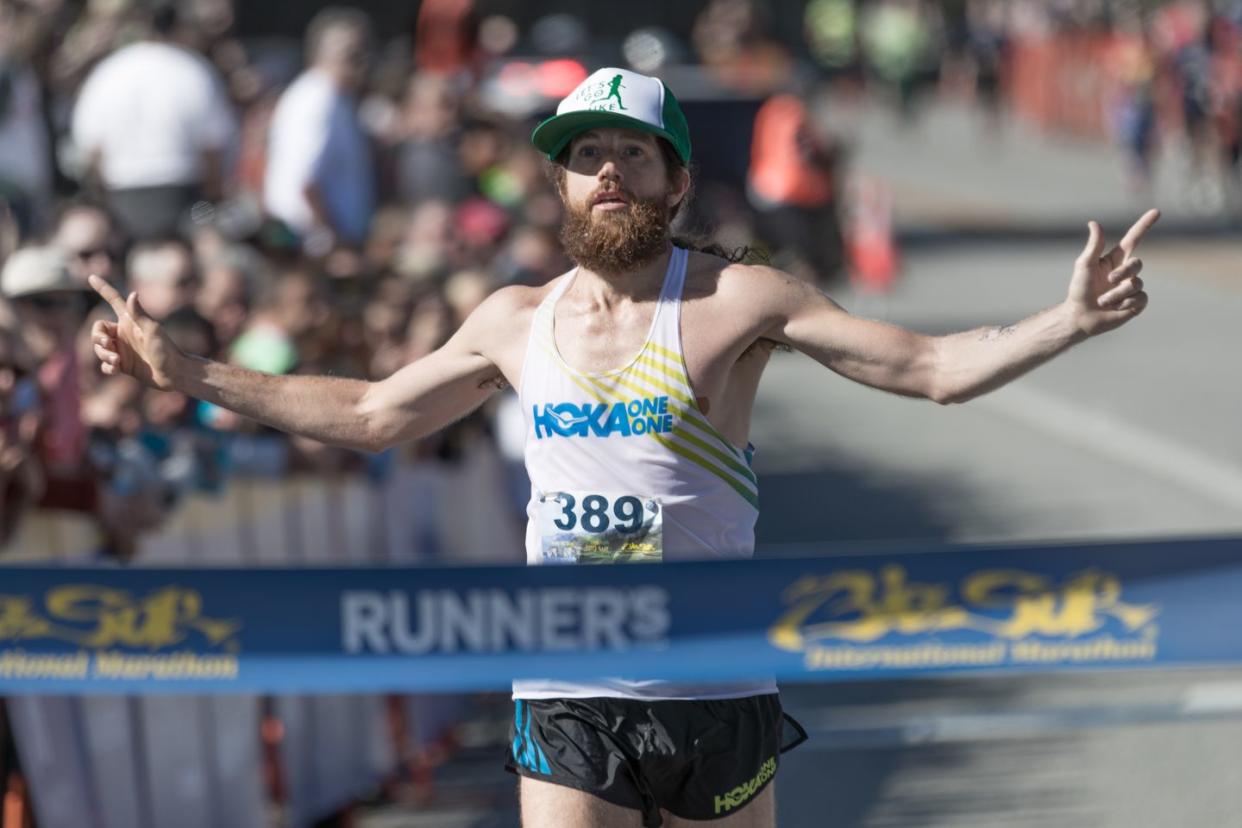
It’s Not About the Miles
Mike Wardian, 50, ultra endurance athlete
If a sport requires enduring things, especially running for a very long time, Mike Wardian has probably done it. He has run 3,200 miles across the US (in 62 days); won the Quarantine Backyard Ultra in 2020 (4.167 miles every hour until you’re the last one standing) by putting in 262 miles over 63 hours; and won marathons on every continent. This year, in celebration of turning 50, he’s returning to triathlon, competing in Ironman Texas…and then aiming to run the length of the Appalachian trail. His strategy:
"I'M NOT AFRAID of being 50; I’m kind of moving towards it,” says Mike Wardian via FaceTime as he’s finishing his run on a recent morning. “I feel like so many people want to be younger, and I just want to just be better. I’m kind of motivated to see what I can do.”
While a return to Ironman may show him how he compares to his younger self, in general, his adventures aren’t about that. “I’m still really excited to get after it and see what’s possible, especially as you age. Maybe you’re not running as fast, but maybe you’re running farther or you’re more self-reliant, doing unique, different things.”
Obviously, he says, you have to stay healthy, and after a whole slate of hernias and stress fractures more than half a decade ago, “I started really focusing on strength training and not doing as many miles.” He cut back from triple digit distances a week to 60, 70 or 80 miles, and hit the gym. What he saw in his running performance, he says “was pretty close to the same result.”
Now, he strength trains regularly with a personal trainer, which helps with form, accountability, and “all this stuff like single-leg moves and resistance bands that is hard to be excited about doing on your own,” he says. And he plays—anything to be out there “doing something different and using my muscles in a different way,” he says. Pickleball (he’s actually a pro) and lacrosse (“I picked it up again recently”)…on top of a heavy full-time job.
At any age, you have to really want to do it. The challenge with ultra endurance sports is that you can’t fake your way through it, he points out. While the benefit of having many endurance races in your life and body is that you know how to handle pretty much whatever is going to come up, you still have to actually do the work. And as life gets more complicated, you need to “find time for yourself in that kind of chaos of regular life,” he says. Wardian gets up around 4:45 AM to have the least impact on work and family when he does his workouts; sometimes he'll integrate another into lunchtime. “If I try to wait until the end of the day,” he adds, “something’s going to happen, like the refrigerator is going to break or the dog’s going to get sick or the kids are going to open a car door into somebody else’s car. I find that not many people need you at 4:45 in the morning.”
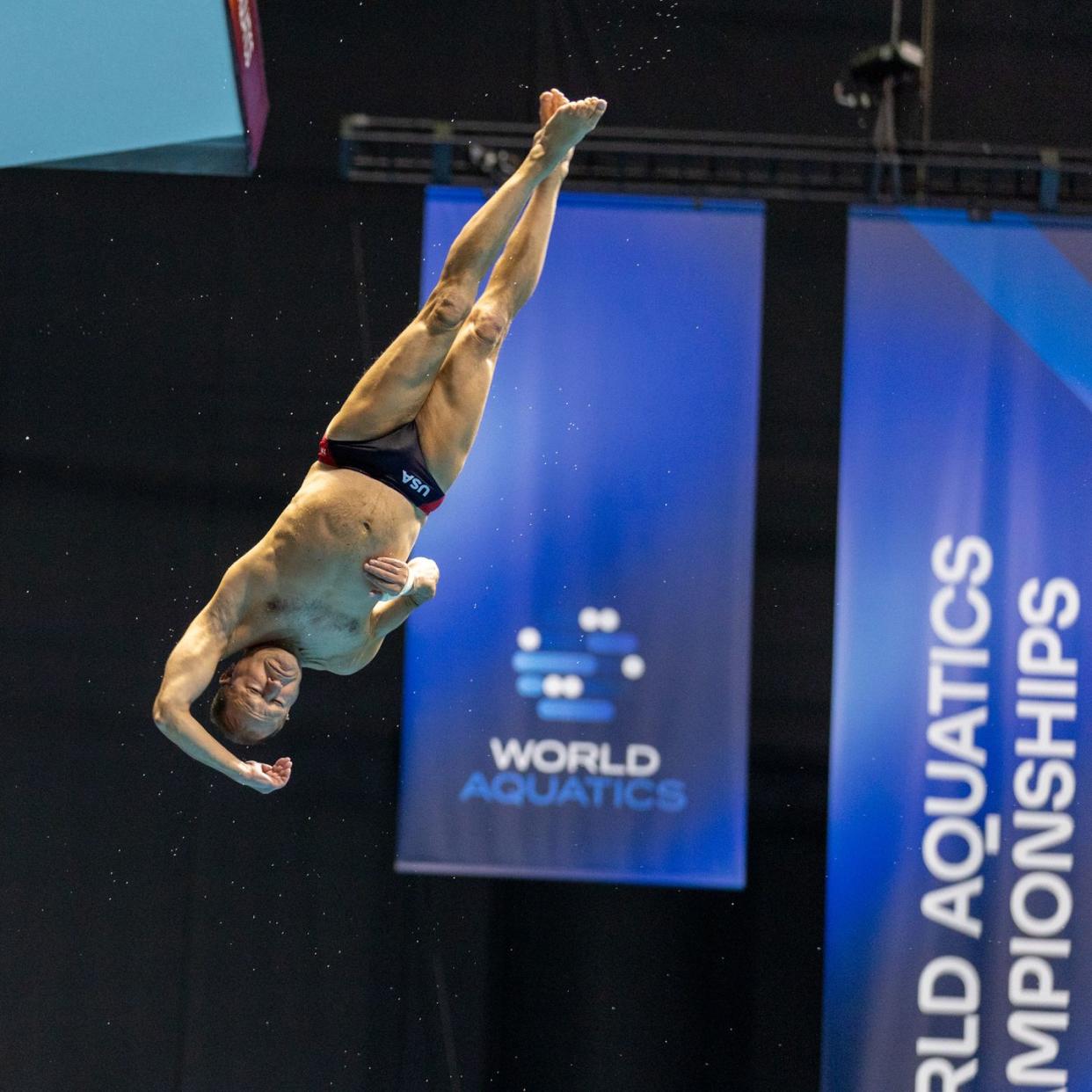
Think Quality Over Quantity
Alex Lapidus, 60, springboard and platform masters diving champion
Alex Lapidus learned to dive in college, competed, and then didn’t come back until 2004, when he was in his 40s. Since then, he’s won 14 Masters World Championships and five World Masters Games gold medals. His competitors say he’s executing difficult dives “that at his age, he has no business doing.” He’s at the pool four days a week, spending about two hours a day doing a combination of dryland and in-water work. Here, in his own words, are what keeps him on top:
"BECAUSE I STARTED diving in college and then took 19 years off before I discovered Masters diving at 40, most of my competitors have much more background and experience in the sport; they’re elegant and graceful in a way that I’m not, so I have to learn and compete harder dives to give myself a chance. My best dives are back 2 ½ tuck from 3m springboard and back 1 ½ with 1 ½ twists from 7.5m platform; my craziest and most unique dive is a forward 2 ½ somersaults with 1 twist tuck from 7.5m platform—I’m the only person my age in the world who does that dive.
Today, I’m a much better diver than I was in college. My boardwork is smoother and more reliable; my takeoff position is in better alignment; I’m learning to move more efficiently with better positions during each dive; and I’m learning to finish each dive more accurately and cleanly. Partly, it’s been steady work, training seriously and continuously; partly it’s just the joy of diving for me—it’s something I always want to go out and do. Partly, it’s being intentional.
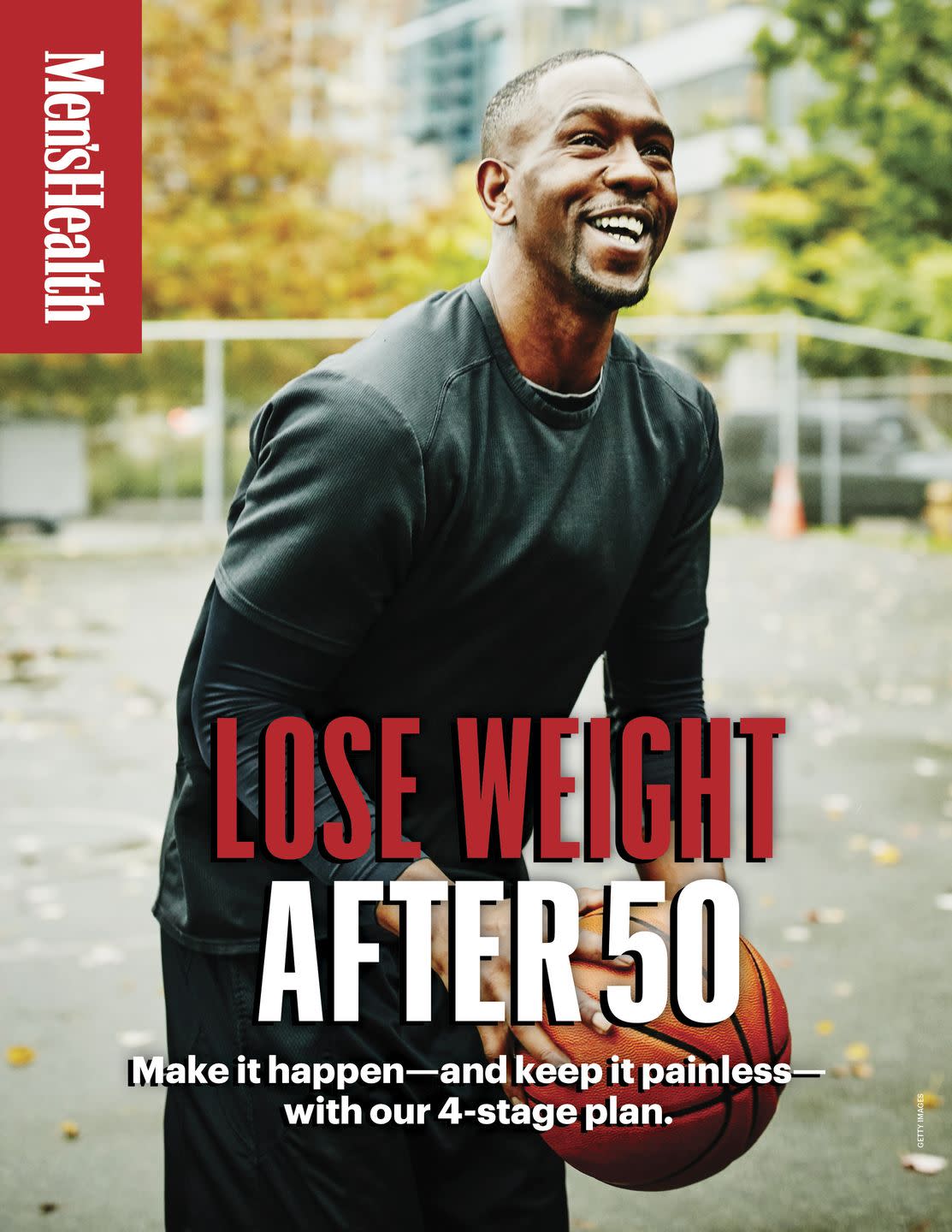
I definitely think more about quality than quantity. I plan what I want to accomplish each day before I start, and I’m not so worried about the volume of dives I do. In my springboard warmups, I also focus less on preparing for the dives themselves, and more on the feel of the board and the rhythm of my approach, so that I can try to get more from the board more consistently.
Since I hit 50, I’ve noticed that I don’t feel quick anymore, which specifically affects how I initiate dives and change position as I’m getting into and out of a dive. I’m trying to get better at relaxing the muscles that don’t need to be tense, so I can move more sharply and efficiently as required, but that quickness is hard to retain. The second is that I’m simply playing defense more, doing exercises to protect my back and especially shoulders, and it seems like part of my workout now is always a rehab from something or other.
For me, I think there might be two dimensions to continuing to compete. One is simply to persist, which comes from the love of the sport and the desire to go out and play, knowing that putting the work in continues to buy me that opportunity. The second is the reality that I won’t always be able to do the things I’m doing now, and I need to have a deliberate plan for how I back down to easier dives, possibly including some feet-first options as shoulder risks grow. Being of strong mind really helps, along with keeping the body fit and loving what you do. Platform is my favorite, but both springboard and platform, for me, represent the dream of human flight."
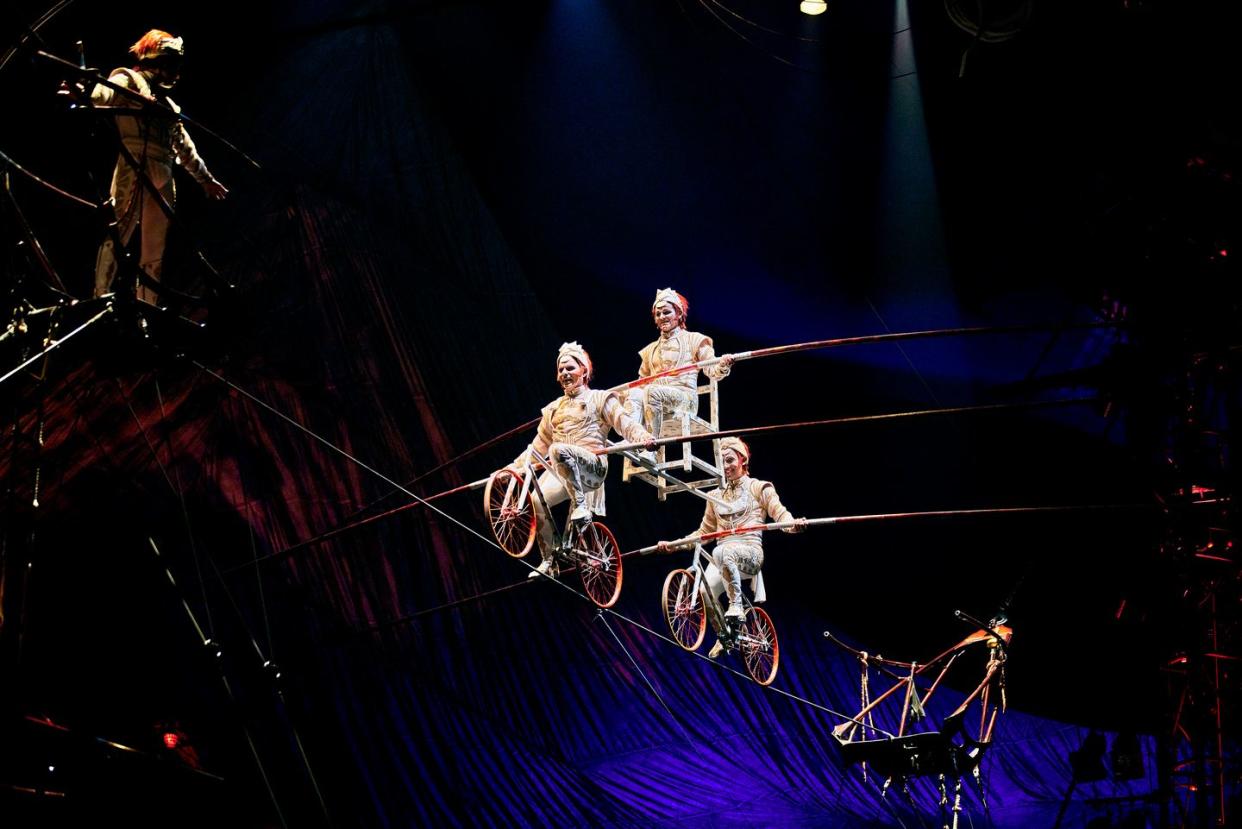
Keep Moving
Vicente Quirós, 62, double high wire performer, Cirque du Soleil
Vicente Quirós has literally been performing a high wire act his whole life. Born into a family of circus artists, he officially started performing in 1972. Now, he does the double high wire act in Cirque’s show KOOZA in 8 to 9 shows a week. Here’s how he stays in the act:
"WHEN I WAS younger, I would train a lot more, as I was still learning,” Quirós says. A new trick might have required 8 hours a day of training. Today, experience and technique take over where power used to. And now, staying on top—usually literally on top of the wire while jumping rope on it, or riding a bicycle across the top wire while other performers jump on and off his shoulders—is helped as much by what he does in between shows as it is by training for them.
On show days, he trains onstage and warms up for about an hour beforehand on a low wire installed in the Artistic tent. “On multiple show days, we will train before each show for about 45 minutes, and I will do a power nap between shows to rest and be ready for the next performance,” he says. Because it’s not just about physical power: “Keeping good discipline, exercising, and sleep helps with my ability to stay strong and focused,” he says.
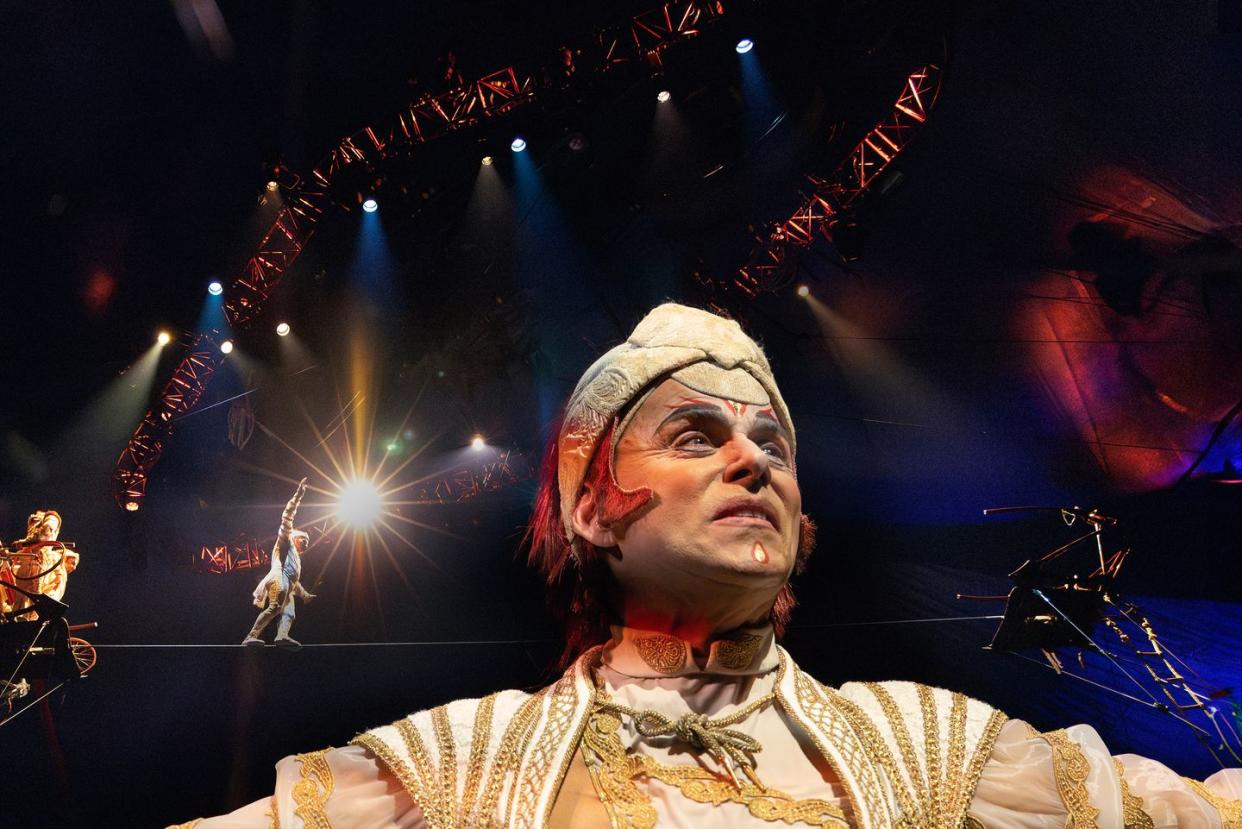
Agility and balance can decline with age unless you train them. He says he hasn’t seen that many changes with age—“I have good genetics,” he says, pointing out that his 85-year-old dad still does trapeze. Yet Quirós’ balance stays highly trained, thanks to his daily routine. That’s similar with agility, he says, but he also credits his agility to staying moving on off days. That’s doing anything from swimming to jumping rope and especially playing soccer with other performers. “The most important thing at this age is to do something and always be moving,” he says.
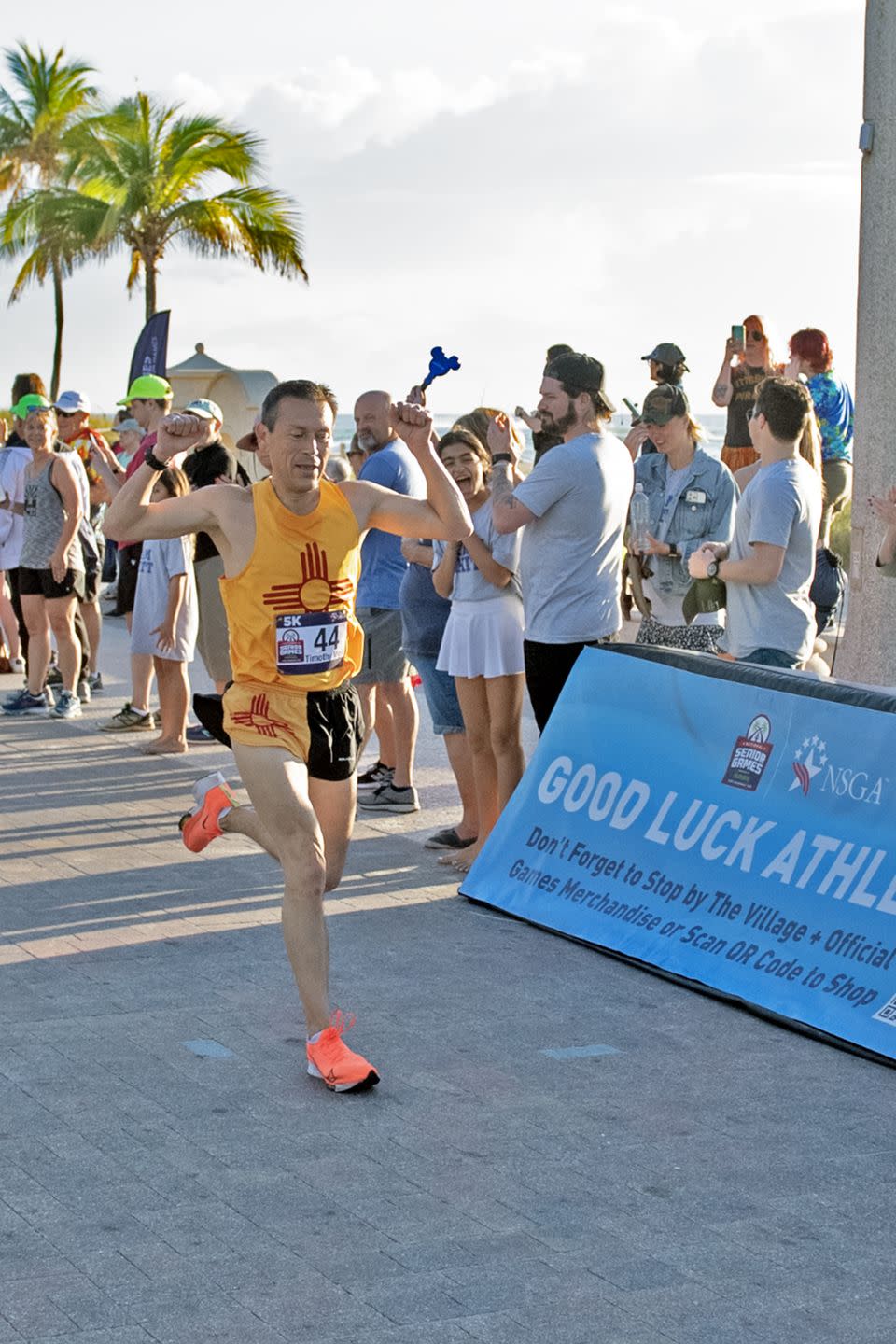
Concentrate on Consistency
Tim Vigil, multi-distance runner; 10K Senior Games Champion
Tim Vigil ran competitively in high school and college (under coaching legend Joe I. Vigil), and has continued running ever since, with some breaks in training here and there. Today, he’s more versatile than ever, not only placing first overall in the 10K at the National Senior Games in 2023, but also taking second overall in the 5K, 2nd in the 1500 and ranking high in the 800 and 400. Prior to competing in the games, he raced half marathons. Conventional wisdom suggests that you get more competitive at longer races with age. But Vigil’s taking a different path: “I’ve really found a rekindling for the shorter track races,” he says. How he aims for the top:
TIM VIGIL, 60, says that his 7-day-a-week training program has helped keep him injury free and able to train at faster average paces than a less consistent program would. “Not everyone can handle the same training loads, but consistency in training is the key,” he says. He builds his with run streaks—the current one has lasted about 5 years and 8 months and involves running a minimum of 5K a day (“unless I am really sick, then it is anything over one mile that I can manage,” he says).
The consistency improves his overall conditioning and he believes it’s what allowed him to run competitively in the games in 2019 without doing a lot of specific speed or strength training. In addition, “running every day improved my discipline to run no matter the weather or how I was feeling after a long day of work. I truly understood the old adage, ‘the hardest step of a run is the one out the door,’” he says. “Seldom are there days I am too tired to run—even after a long run—because of the consistent daily miles.”
He has cut back the miles from 85 a week in his 30s and 40s to about 40 to 60—including long runs that help build his endurance—and does stretches before and after workouts designed to help him maintain his stride length. “I noticed that as I got older my stride length had gotten shorter, so now I work to maintain it, which helps with the training pace,” he says. “As I hit 50, I realized that in order to run fast, I needed to maintain muscle strength,” he says. When training for a competition, he does resistance band training 3 days a week for about 20 minutes, plus sit-ups and pushups daily.
Not content to keep improving on what he’s already done, he’s aiming for the 2000m steeplechase for the USATF outdoor masters championships in July. He ran the 3000m steeplechase in college, so it’s not completely new to him, although different from what he has been doing. “Bottom line,” he says, “I love to compete and put myself to the test whether I am first or last.”
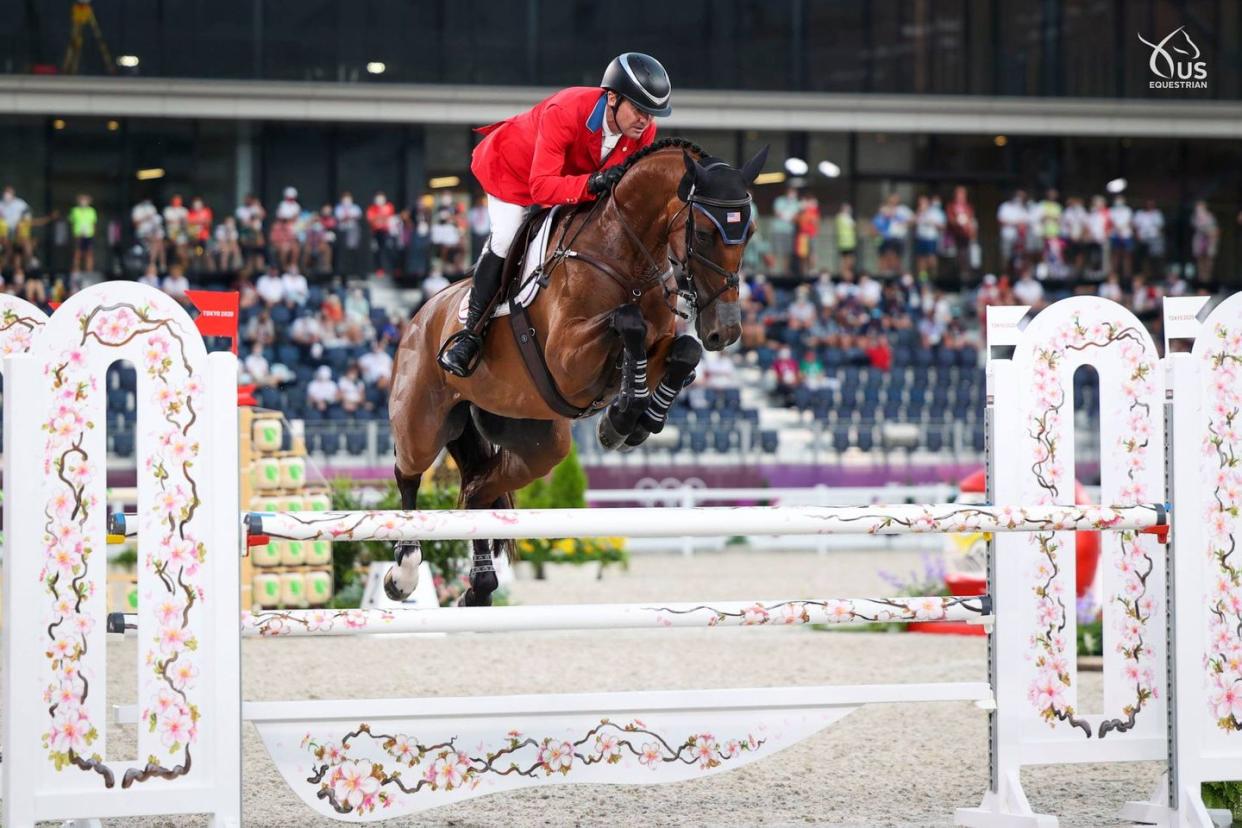
Ease In and Communicate More
Phillip Dutton, 60, Paris-Bound Olympic Equestrian
Phillip Dutton says he probably learned to ride horses before he could walk. And ride he does; he’s competed in every Olympic Games since 1996. In the first two, he won team gold for his native Australia; following that he was a member of the U.S. team, winning individual bronze at the 2016 games. While riding is a little more forgiving of age than some Olympic sports, it’s still very physical, and Dutton stays up for the challenge—including the Paris Games this year—with these strategies:
"MY PASSION AND excitement for the sport that I do is probably the main thing that has kept me going. So mentally, I am still really invigorated every day to ride and try to improve,” he says. That means about four to five hours a day riding, followed by stretching work with a physical therapist. “Outside of that, I like playing other sports and I’d rather play tennis to get in shape than go to the gym,” he says.
While riding hasn’t changed, he gives warmups and recovery more time than he used to. That means taking time before jumping into the toughest stuff: “I’m not as agile as I used to be, and I sort of ease into the work and probably take longer to get where I’m at my best on a day-to-day basis,” he says. And he also takes care to attend to recovery if he’s strained something or had a hard day.
Over time, other dimensions of his performance have deepened. “I'm a better communicator with my horses now. I'm more sympathetic and understanding, and I try to help them along as well as trying to improve,” he says. That’s essential, since it’s not just you out there—you’re working with another being that’s very athletic and weighs more than 1,000 pounds. “So, through my experience, I've sort of learned how to get along better with the horses and probably train them better than I did when I was younger.”

Go At Your Own Pace
Yuji Hirayama, 55, rock climber
Yuji Hirayama, who’s been known as one of the strongest crack climbers, keeps aiming to push limits in the sport. In 1998, he was the first Lead World Cup gold medalist of Asian descent, and among other notable climbs, holds various speed records on El Capitan. This past February, he made the fourth ascent of Japan’s Daydream (a tough 5.14), which requires serious skill and mental focus. His insights:
"TO KEEP CLIMBING for the long term, I need to understand my body more,” says Yuji Hirayama. Consistent climbing helps—he climbs outdoors twice a week and indoors twice, for two to three hours at a time, explaining that it makes him more resilient to pain and gives him a better sense of when he will be successful.
His climbs are still impressive, but he’s not looking to compete with his younger self. “I’m not pushing myself beyond my age,” he says. “What I could do when I was young I cannot do now, so it’s important to accept that and go at my own pace.”
Climbing, of course, is also a mental game, and he says that age has helped him with that: “I stopped overthinking. I stopped dwelling,” he says. And he stopped tiring himself out in pursuit of one hard route after the next. Now, he’s looking to use his energy differently. “I would like to climb Maturity (5.15a) in about two years, taking my time without rushing,” he says.
For other guys looking to stay in peak shape past age 50, “it’s important to enjoy yourself as you grow,” he says. “And control your past pride. Past pride intercepts our ability to be who we are today.”
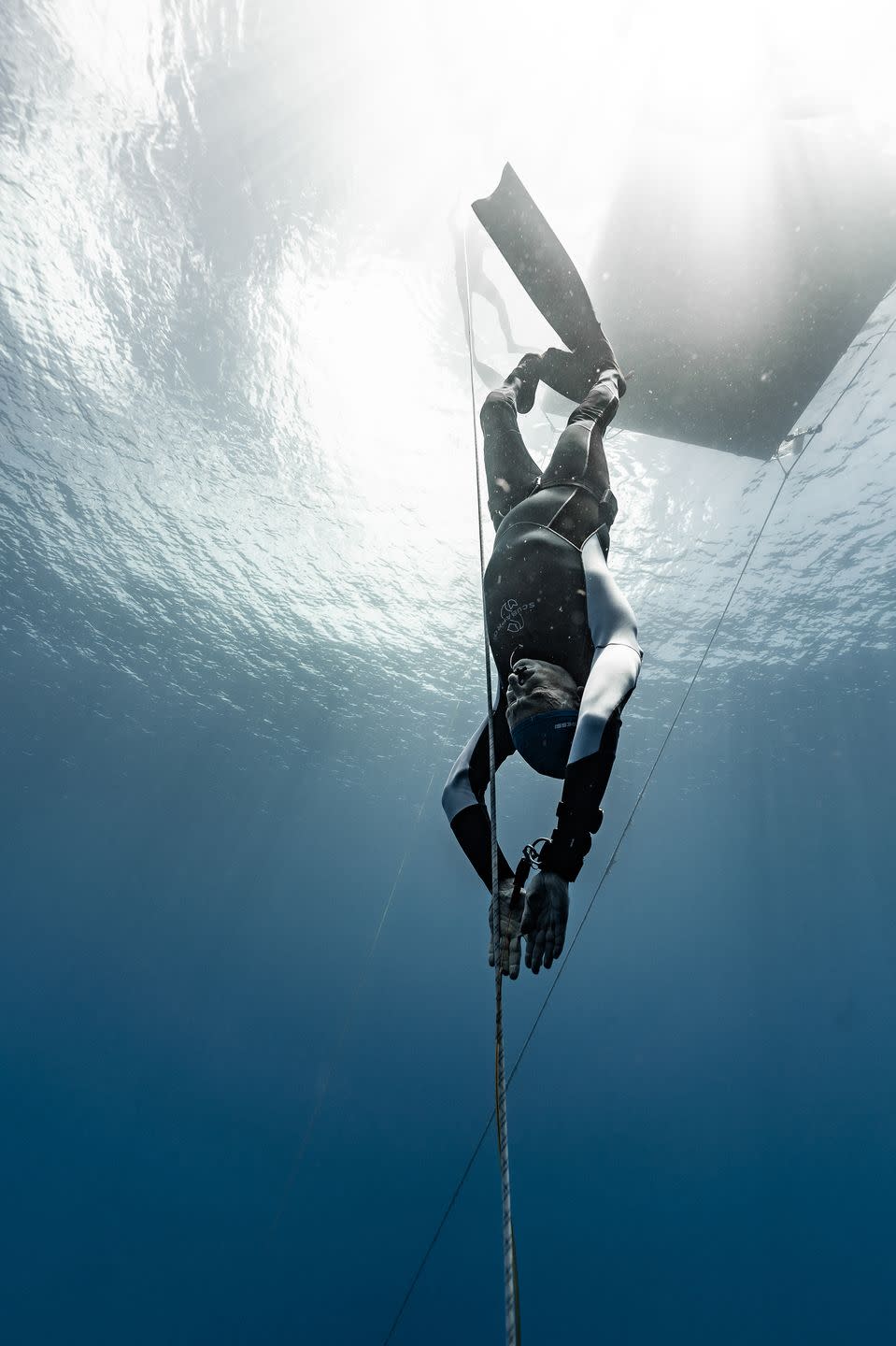
Let Wisdom Work For You
Avi Kleyman, 7-time Masters National Recordholder in Freediving, on the 2024 US National Freediving Team
Avi Kleyman, 54, didn’t take up freediving until a friend invited him to join a beginner’s course. Having liked the water as a scuba diver, he decided to take on the new experience and realized, he says, “that I was cut out for this sport in terms of larger lung capacity and the physical ability to handle the crushing pressure the body sustains at depth.” Since then, he’s only gotten better, and believes that age contributes to his success—and adds that hard work and the backing of the U.S. National Team (under the U.S. Freediving Federation) helps, too. Here’s how he keeps going big, in his own words:
"FREEDIVING IS EQUALLY a mental challenge as it is a physical one, and I found both aspects to be highly trainable. My journey has taught me that while natural abilities play a role, dedication and the right training can generate incredible results.
As opposed to most professional sports, where getting older causes a gradual or sharp decline in physical performance, in freediving, the wisdom, patience, and life experience that we gain as we get older often contribute to performing at a high level. Mental strength, a crucial aspect of freediving, is an area of my life that has been enhanced over the years due to exposure to a broad array of life experiences. Also, on a physiological level, our heart rate gets slower as we get older, which is a major contributing factor to improved performance. In fact, few of the most recent world records were done by athletes who are in their late 30s or early 40s.
Making a commitment to freediving as a professional sport, and not just as a recreational hobby, resulted in many positive changes in my life. I went from occasional social smoking to not smoking at all for the past 4 years, limiting alcohol consumption, having a healthier diet, and living a significantly active lifestyle.
The focus now is much more on quality over quantity. Warm-ups take longer, emphasizing dynamic stretches and mobility work to maintain agility. Recovery periods are longer and more structured, including activities like yoga and meditation to enhance mental recovery. I prioritize breathwork and mental training to improve my dives, alongside maintaining a strong core and cardiovascular fitness through swimming and gym workouts.
For others seeking to stay at their peak past 50, I’d say that staying athletic should not feel like a chore. Choose a sport that brings you joy, that you are passionate about, and that truly will result in a healthier lifestyle. It is not really about feeding the ego, but instead the passion.”
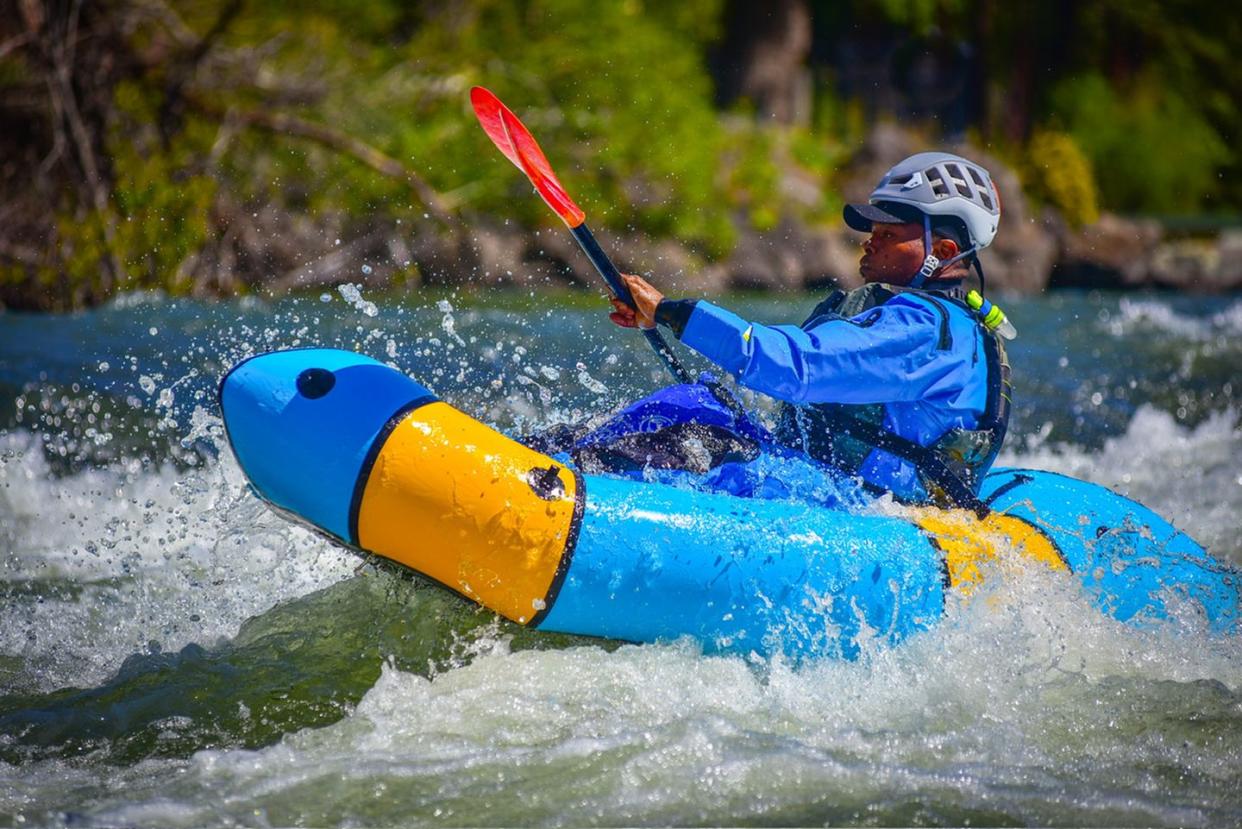
Draw Mental Strength From Experience
Clifton Lyles, 53, ultra-endurance athlete and adventure racer
In 1999, Clifton Lyles watched a Discovery special on adventure racing—a niche sport that intermixes several disciplines into one navigation-based race. "I saw the show on a Friday, and signed up for my first race on Saturday," he says.
Since then, he's completed in several of the most difficult adventure races around the world, including Primal Quest Moab, where he and his team biked, hiked, mountaineered, horseback rode, kayaked, and whitewater swam (yes, that's a thing) their way to the finish line. His team completed the 417-mile quest in 8 and a half days, through temperatures as high as 120 degrees. One of his biggest accomplishments in the sport was leading Team Onyx, the first all African American adventure team, through the 400-mile Eco-Challenge Fiji in 2019. He's also competed in hundreds of ultra-endurance races. In 2021, he placed third in the men's 50+ division in the 24-hour Mountain Biking Nationals. How he does it:
AT 53, WITH 25 years of racing under his belt, he's found that his experience has given him an advantage in some ways. When it comes to maintaining the mental strength to continue through races lasting multiple days, "you get to the point where you have these demons telling you to quit. In your 50s, you're so used to having those conversations that rarely will you ever drop out of a race," he says.
To manage changes in his body, Lyles is committing a bit more to low-impact training styles like swimming and biking—something he would have previously avoided. He still works out 5 to 6 days a week, but "splits that up between on my feet and off my feet," he says. He averages about 1000 miles a week on the bike, and 250 on his feet between hiking and running. "I'm still able to get in great endurance training, but I'm not beating my body up as much in order to do it."
He's looking forward to another year of ultra-endurance and adventure races coming up, including an adventure race through the Grand Tetons, and a 500-mile gravel bike race. One of his greatest motivations for continuing to succeed in endurance racing is to inspire others that look like him to give ultra-endurance and adventure racing a go. The community he found in the sport was a major reason he became so passionate, and he says he would love to see others find their home in it, too.

This is just the beginning. See what else guys at 50+ are thinking, doing, and crushing here.
You Might Also Like
